Extreme heat, coupled with chronic health issues, is killing elderly New Yorkers
NEW YORK – Jewel Floyd doesn’t sleep in her bedroom.
The small room facing south is a few degrees warmer than the rest of the older woman's 13th-floor apartment in a concrete senior public housing building in the Bronx. Sunlight seeps through the window most of the day. Floyd, 77, estimated the room stays above 80 degrees most of the time during the summer.
Instead, she’s confined to her living room, where her couch faces her bed.
At the window next to an air conditioning unit, she has shelves of plants blocking the view – of two bridges over the East River.
A fan moves stuffy air around in her tasteful, but uncomfortably warm, room.
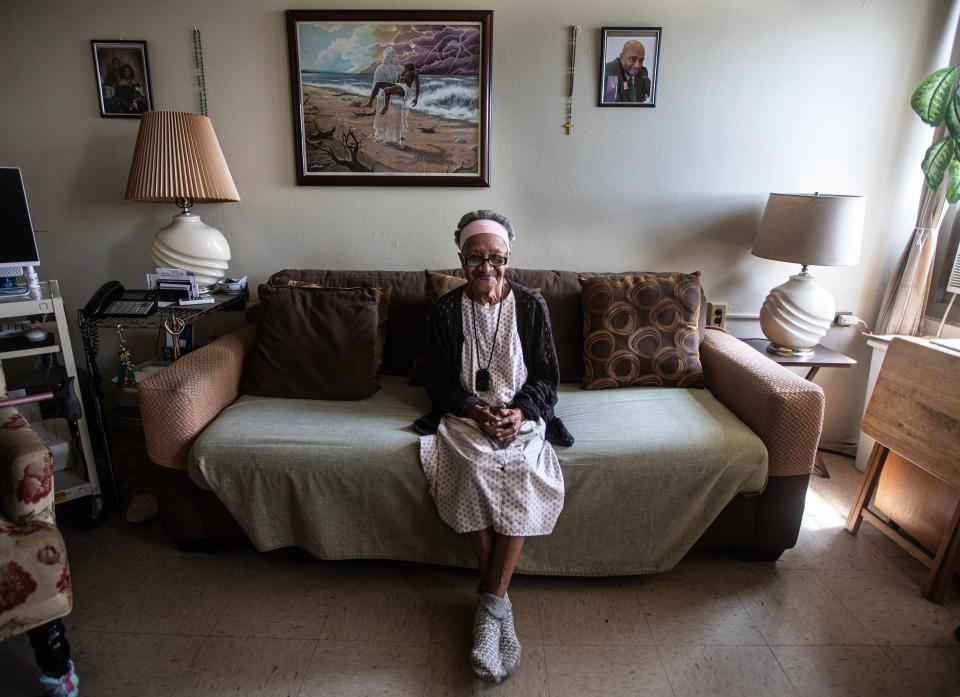
Floyd, a retired nursing assistant, can’t move much because of her first stroke, which caused her to develop vertigo, making it feel like the world spins around her. She had another stroke a year ago, and she has diabetes and high blood pressure.
Those conditions put her at risk in the summer. And people with diabetes, for instance, can just feel hotter – especially if the condition injures their nerves and blood vessels in a way making it harder for them to sweat and cool down, according to the Centers for Disease Control and Prevention.
When Floyd’s apartment floors start to get hot to the touch, she knows to turn on the AC, an old window unit she’s owned for two decades.
She constantly flips to the Weather Channel on her television. If it's above 80 degrees, she doesn't go outside. One day this summer, July 26, temperatures hovered in the high 80s throughout the afternoon. New York issued advisories for extreme heat over the next few days that, coupled with humidity, made the temperature feel hotter than 100 degrees.
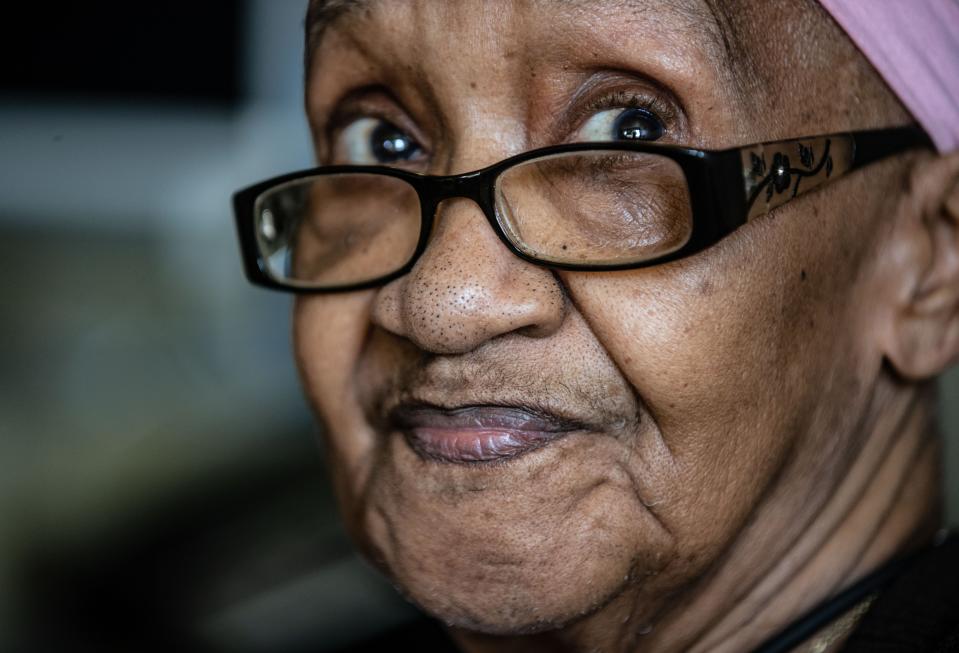
“It’s too hot, period,” Floyd said. “And for me, a lot of heat does not help the vertigo, period.”
Heat is a silent killer and the most common weather-related death in the United States. As global warming continues to raise temperatures and extend the summer season longer in places like New York, people who are already more vulnerable because of age or medical conditions face even greater danger.
“It’s just going to get hotter, and we’re going to have more heat waves,” said Kristie Ebi, a professor at the University of Washington’s Center for Health and the Global Environment. “We’re an aging population and we’re going to have more people at risk.”
Extreme heat kills and maims: Here are some of its victims from across the US.
Hundreds of heat-exacerbated deaths annually, NYC report says
In New York City, about 350 people die from hot weather annually, the city Department of Health and Mental Hygiene estimated in its latest heat-related mortality report.
The vast majority are classified as heat-exacerbated deaths, or those caused indirectly by heat aggravating an underlying illness, such as heart disease. A much smaller amount of people die from direct heat stress, an event more common in areas such as Phoenix that have seen temperatures soar beyond 110 degrees for weeks this summer.
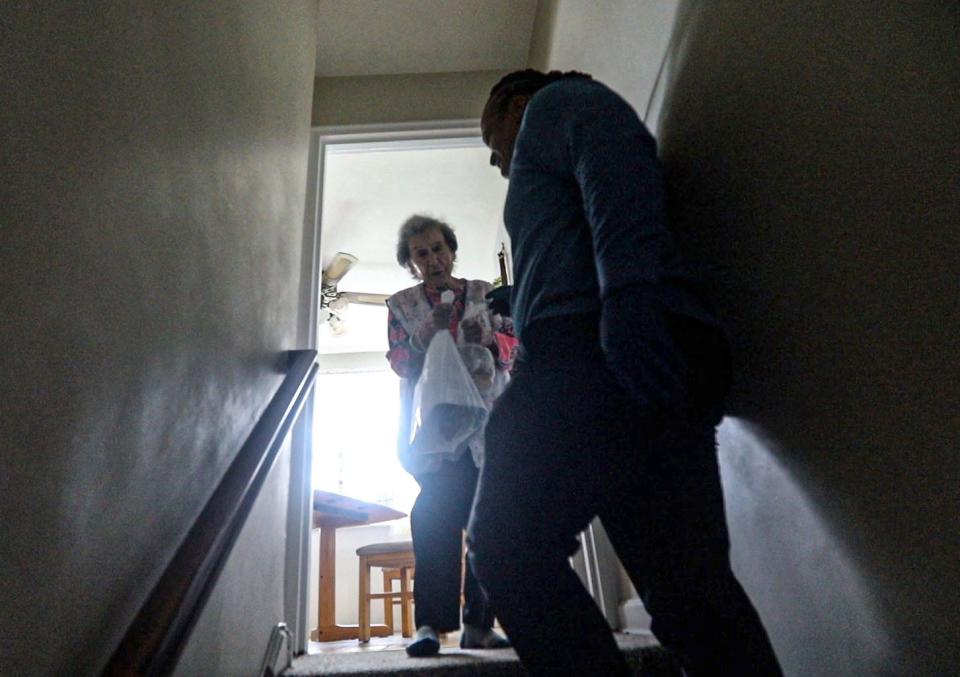
In New York City, people older than 60 had the highest rate of heat-stress deaths.
Among deaths with medical examiner records available, nearly all had at least one chronic health condition.
They come from neighborhoods that are disproportionately Black or Latino and low-income. Black residents are twice as likely to die from heat stress compared to white people.
Most of the dead didn’t have AC, the report said.
In response to interview requests, the city health department referred to a news conference at the start of a heat wave. City officials warned New Yorkers about heat indices reaching over 105 degrees.
"This is not our first heat wave," Mayor Eric Adams told reporters in late July. "And with climate change accelerating, it won't be our last."
The number of hot days – defined by the daily maximum temperature being at or above 82 degrees – has increased in the past decade, the city health department report noted. "Extreme heat days," defined as temperatures surpassing 95 degrees, have increased more modestly.
Maternal deaths rising CDC sounds alarm on pregnant women's doctor visits amid rise in maternal deaths
The city report said the combined nonextreme hot days above 82, coupled with extreme heat, have contributed to increases in heat-exacerbated deaths.
Despite the record-setting heat of 2023, we may not see a cooler summer for the rest of our lives, said Kristina Dahl, a climate scientist at the Union for Concerned Scientists. Since May 1, 77% of extreme heat alerts in the U.S. from the National Weather Service have had a clear climate signal, the union’s index said. Greenhouse gas emissions trap heat that normally radiates out, raising global temperatures.
“As we warm average temperatures, it makes it easier for hot days to reach really hot levels,” Dahl said. “We are seeing an increase in the frequency and the severity of extreme heat. And that has consequences for human health and well-being.”
Meal service workers on the lookout for heat symptoms
Marco Padillas, a driver for the New York City nonprofit Citymeals on Wheels, doesn't need a GPS weaving in and out of residential streets in the eastern Bronx. He drives a red Dodge Ram truck with its bed converted to store meals for elderly, homebound New Yorkers, most of whom are on fixed incomes.
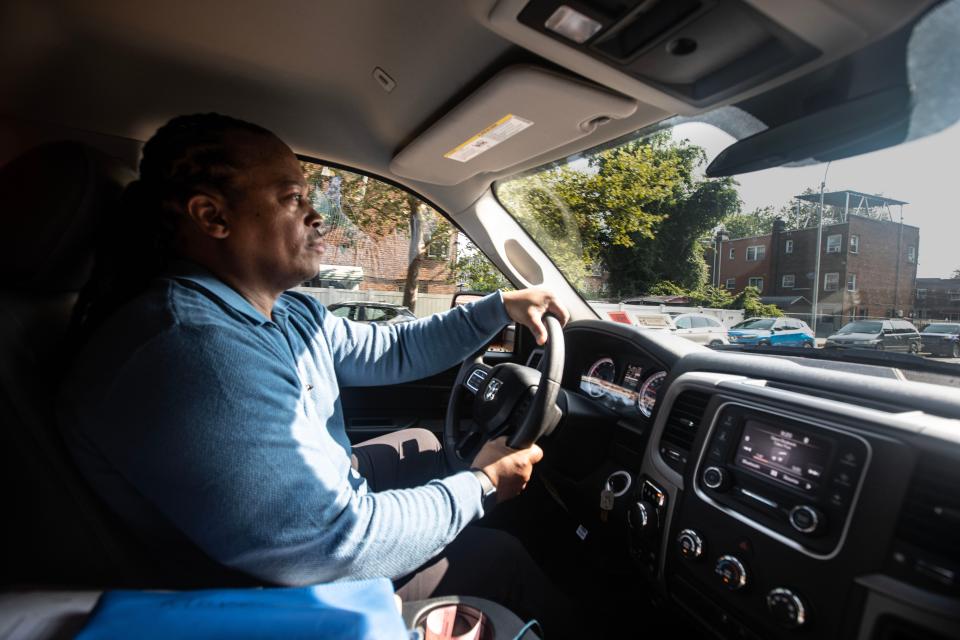
The air conditioning kept the truck’s cabin cool on one mid-summer day. Dave Brubeck’s jazz played in the background. Padillas wore a long-sleeve blue polo, black slacks and black Yeezys, which had gum-bottoms that he said made it easier to do the walking necessary. He wore blue gloves for deliveries.
At each stop, Padillas ticked off names with a pencil. Then, he opened the truck’s converted back latches. He placed regular, Latin, halal or kosher meals into a plastic bag. Padillas seemed to remember who’s dating whom, the codes if someone is home – a dog statue on the windowsill, or how a client tends to sleep while watching daytime television.
Padillas also takes note of the conditions he sees. Much of this is based on training to look for signs of elder abuse, he said.
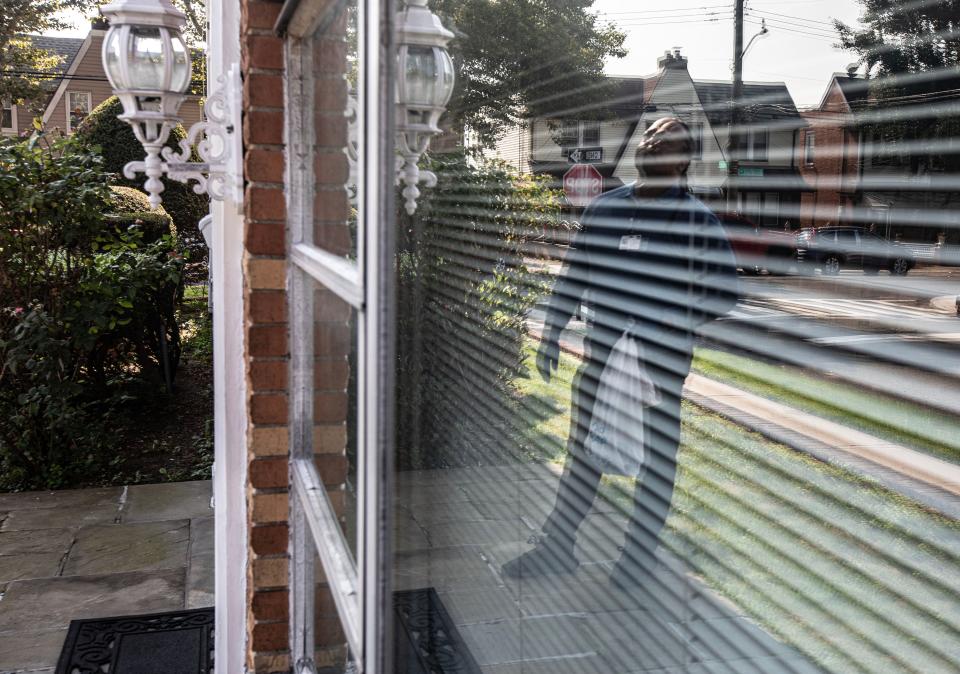
“We just look for things we didn’t notice the day before,” Padillas said. During hot weather, this includes how a person looks, what they wear, the state of the apartment, or if the AC hadn’t been turned on. “If we’re just seeing discomfort, or any signs of discomfort,” he said, “we ask questions, talk to them, and interact with them.”
During the Sept. 11, 2001, terrorist attacks, Citymeals began providing emergency meals to seniors isolated in lower Manhattan after the World Trade Center towers fell. Citymeals then expanded its emergency operations during Superstorm Sandy, in 2012, and again during the COVID-19 pandemic.
The nonprofit also provides emergency food packages with nonperishable meals. While this used to be distributed solely in winter, the nonprofit recognized changes with extreme weather.
“We're now doing them seasonally because of climate change,” Citymeals CEO Beth Shapiro said. “Weather-generated emergencies are happening all the time.”
“Our recipients are most at risk for heat-related death,” she added.
New data shows hottest summer on record 'Climate breakdown has begun': Globe swelters to hottest summer on record, new data shows
How heat affects the body
W. Larry Kenney, a professor of physiology and kinesiology at Penn State University, has looked at the effects of heat stress on the body since the Three Mile Island nuclear meltdown in 1979, when workers experienced extremely hot temperatures at the reactor.
Now, he's focused on heat's daily effects. This includes a forthcoming five-year National Institute of Health study on heat stress, conducted on subjects varied in age who participated in ordinary activities, such as sitting or using a treadmill, in chambers that fluctuate in temperature and humidity.
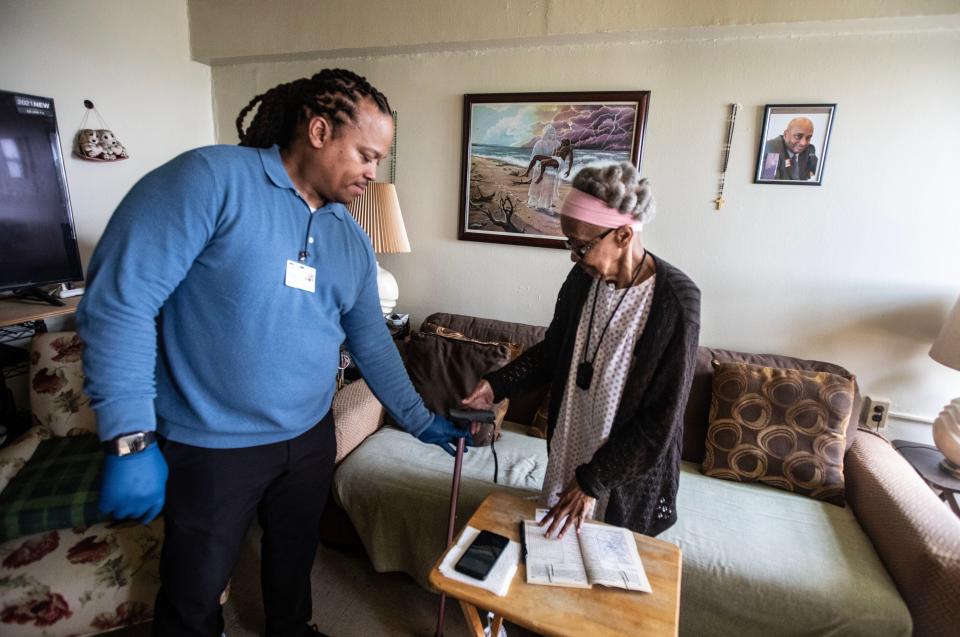
With hot conditions, humans have two responses: rushing blood to the skin and away from organs, to keep the body’s core temperature below a certain level; and sweating, causing evaporation that cools the skin.
Add in hotter temperatures and more humid conditions, and the body’s cooling mechanisms come under further stress. As a result, the heart begins to work harder to pump blood. A person's organs may begin failing due to drops in blood pressure. Cardiovascular issues comprise the bulk of heat-related deaths.
Older people tend to be at greater risk because the body’s ability to cool itself slows down. That decrease in function can be worsened by medications or health issues.
“Even healthy aging carries a burden in our ability to regulate our body temperatures in hot environments,” Kenney said. “We tend to sweat less. We tend to become more sedentary. And we have a decreased ability to pump blood flow to the skin. So that’s even in a fairly active 60- to 80-year-old.”
‘A balancing act the whole day'
In the public housing where Floyd lived, residents crowded inside a senior center that had AC blasting. Some women sat talking, men played at the pool tables.
As Padillas knocked at Floyd’s place, she yelled that she’d be just a minute. When she appeared from behind the door, Padillas reached inside to grab her. Floyd’s vertigo causes her to quickly lose balance, so Padillas knows to reach for her before she falls.
“It’s like a balancing act the whole day,” Floyd explained.
After storing her meals, Padillas briefly chatted with her. She called him “the best friend I’ve ever had, as far as a man’s concerned.”
She gave him a glass vase with a small bamboo plant. It came from her shelves of plants, which gave shade against her living room window. In his air-conditioned truck, Padillas tucked the bamboo vase into his cup holder for the rest of his route.
‘It could be tens of degrees too late’
A few hours after Padillas made deliveries, a coalition of environmental justice organizations gathered at a Masonic Temple in northern Manhattan. Organized by the New York City nonprofit WE ACT for Environmental Justice, residents gathered to identify immediate effects of extreme heat, and how to help if someone has symptoms of heat exhaustion or heat stroke.
Residents also looked at longer term solutions to codify cooling centers, which a 2022 city Comptroller's report found had limited hours and weren't evenly distributed, particularly in heat-vulnerable neighborhoods. They also considered a citywide master plan for more trees, and setting an indoor maximum temperature, not unlike current laws across the U.S. for minimum indoor temperatures before heat has to be turned on.
Advocates have warned of areas that see hotter temperatures due to the "heat island" effect, caused by lack of greenspace and swaths of land covered by industry, roads and poor housing stock that trap heat. While New York’s official recorded temperature is traditionally recorded at Central Park, areas that experience heat island effect often see temperatures as much as 20 degrees hotter. These areas have higher concentrations of Black, Latino and low-income people.
“Even on just a neighborhood scale, it’s likely a lot hotter, but also the indoor temperatures are elevated,” said Caleb Smith, WE ACT’s resiliency coordinator. “It could be tens of degrees too late for a lot of people.”
The USA TODAY Network-Northeast has been investigating the effects this summer of a rapidly heating planet on people who live in urban areas. This is part of the USA TODAY project Perilous Course.
Eduardo Cuevas covers health and breaking news for USA TODAY. He can be reached at EMCuevas1@usatoday.com.
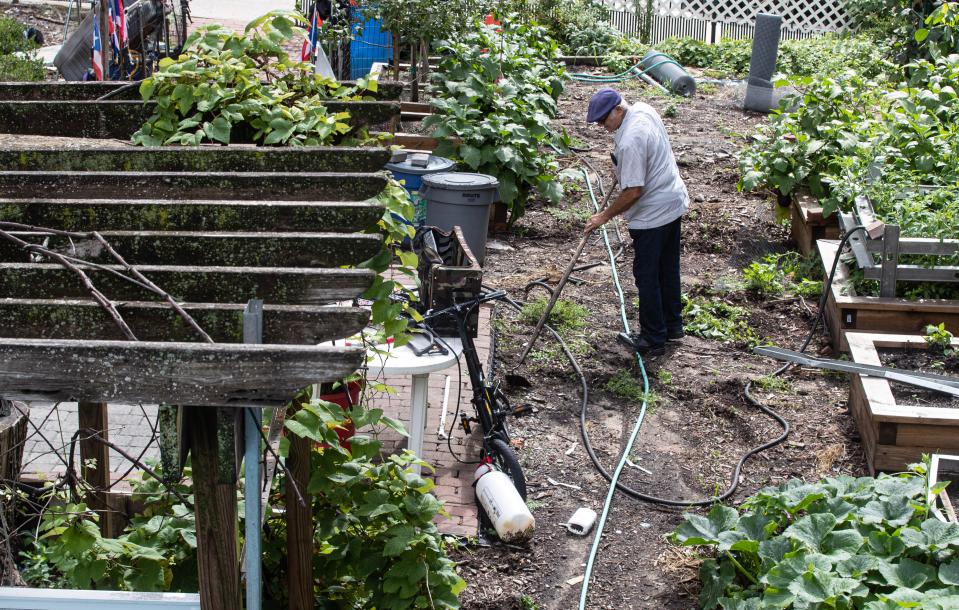
This article originally appeared on Rockland/Westchester Journal News: Extreme heat is killing New Yorkers with diabetes, heart problems

